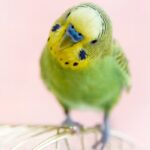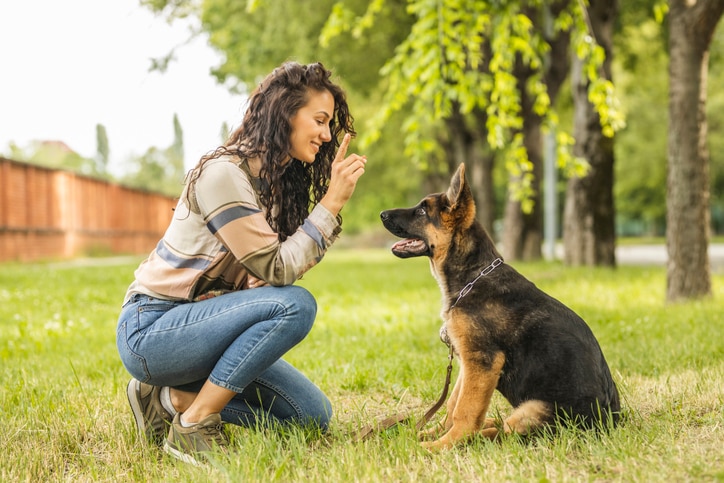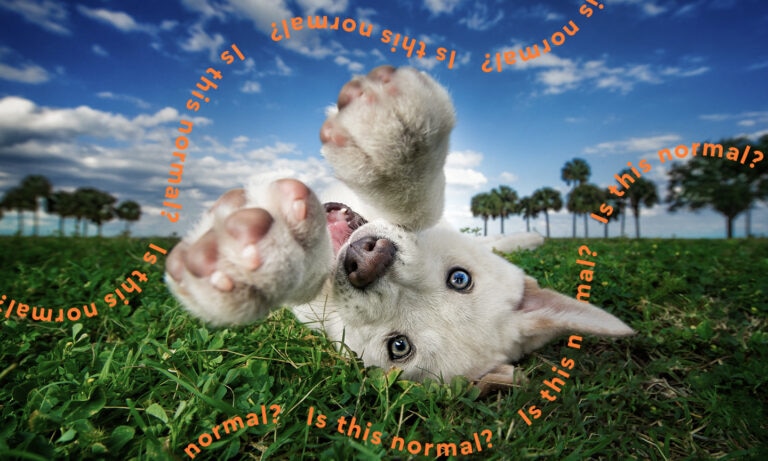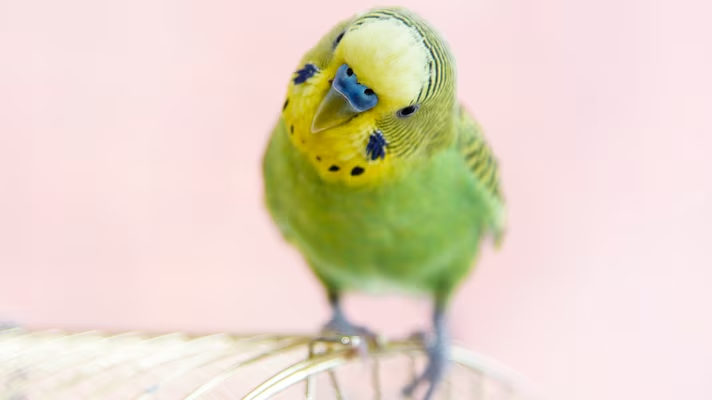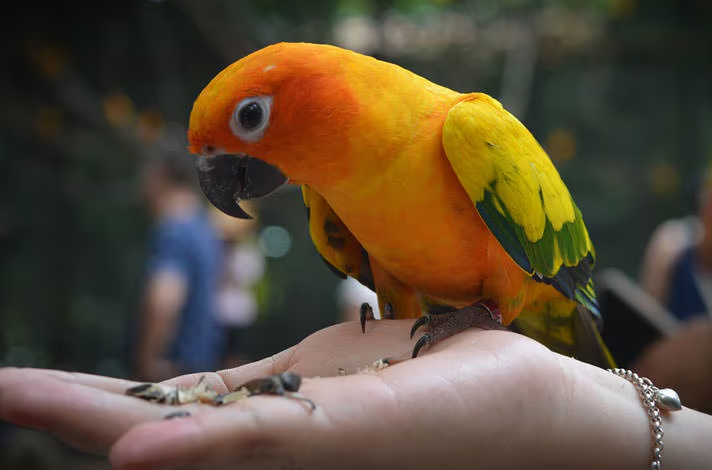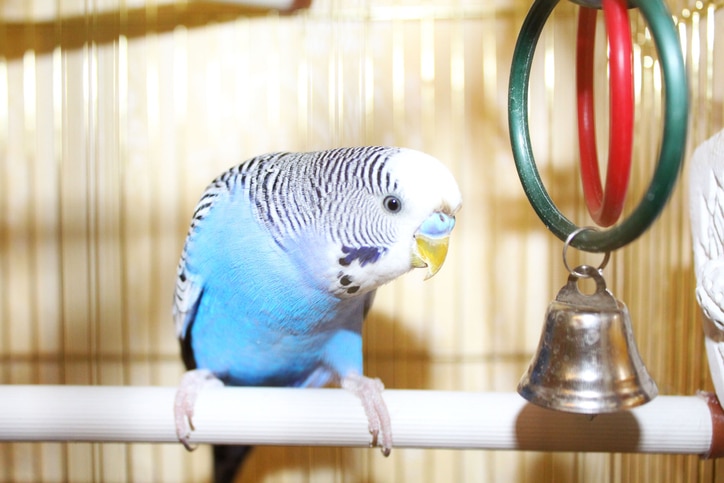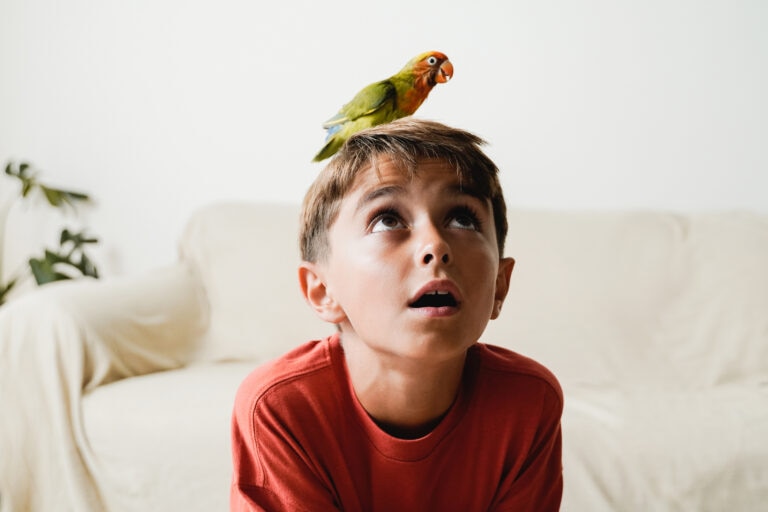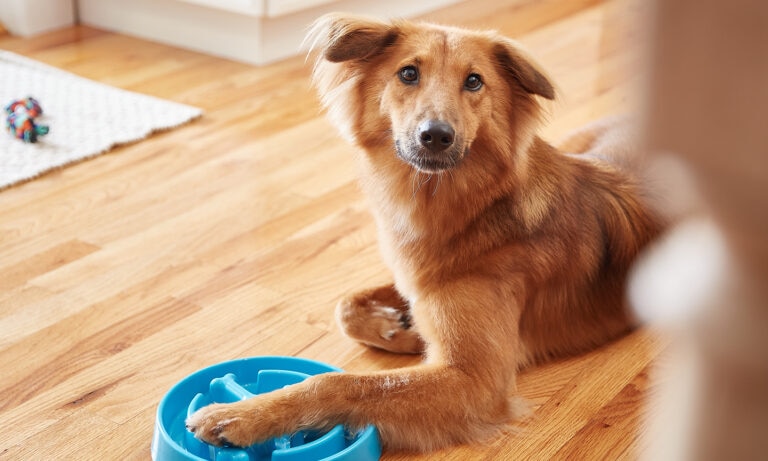Train Dogs To Tolerate Parrots
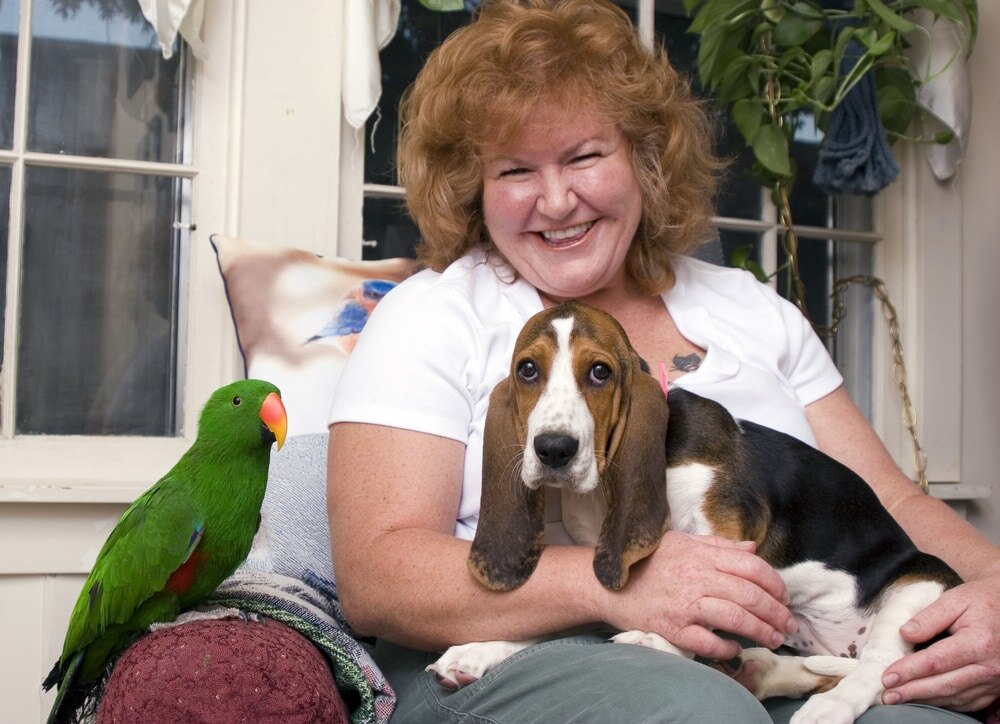
Photo by Chewy
Q:
I’m planning on adding a small dog, a terrier mix, to my household, which includes a cockatiel and a Senegal parrot. How do I safely introduce the dog to the birds? Can I teach the dog to respect the birds so that it does not chase or bark at them? Will I always have to keep the birds?cages in a room separate from the dog while I’m at work? Would a puppy or an older dog be a better choice? Thank you.
A:
I appreciate your question and share your concerns, and kudos to you for asking before getting a dog. Unfortunately, well-meaning parrot people often assume their dogs can be fully trusted around pet birds. I am a lifetime dog lover, but I have seen entirely too many parrots and pet birds injured or killed by dogs over the years. These experiences have led me to believe that no dog can be trusted around a small prey animal like a parrot. After all, even the largest macaw only weighs 4 pounds.
I turned to my colleagues in the dog division of the International Association of Animal Behavior Consultants to address your questions. Although I understand your hopes for the fabulous companionship of a terrier mix, be aware that terriers were originally bred to hunt rodents. Consequently, they have an extremely strong prey drive — an instinct to catch and kill small animals.
Ken McCort of Four Paws Animal Behavior Services in Ohio has six dogs, eight cats, seven larger birds and some finches living in his house. “[Terriers] have a strong desire to chase. That motor pattern is not always strong in some lines of pet dogs,” said McCort. He suggested you consider a livestock-guarding dog such as a sheepdog or collie. They have a calmer demeanor. Other dog professionals I spoke with concurred with that assessment.
They also unanimously agreed that an adult dog would be a better choice, because puppies are more difficult to assess. According to Lee Livingood, a professional dog trainer in Pennsylvania, “The key to keeping the birds safe is to first determine the prey drive of the dog. In my opinion, that’s not as reliable with a young puppy.” An adult dog can be evaluated more accurately.
New Dog In The House
Evaluate the dog’s behavior after it has been in a new home for several days. A newly adopted dog is often “so overwhelmed that the first several days it may act as though it has no clue there is a bird, or other small animal, in the home,” said Livingood. “Then about day three or four, after the owner thinks everything is peachy, the dog suddenly notices” the birds and disaster might follow.
Does this mean you shouldn’t get a dog? No. I would suggest, however, that you work with an experienced dog behavior consultant or trainer in your area to help you evaluate the dog you choose and to train it to be tolerant of birds. You can locate one through the consultant finder at IAABC website.
Always shut the dog out of the room when your birds are out of the cage. Do not make the mistake of assuming your presence will prevent an attack. Unfortunately, many people have learned through experience that they simply could not move fast enough. It’s also a good idea to keep the dog away from the birds and bird cages whenever you are gone. I know of several instances where birds were killed through the cage bars by dogs.
One of the saddest outcomes would be for the dog to lose its home or to face euthanization because it killed a pet bird. That isn’t fair to the dog, which was simply following an instinct. Regardless of the amount of training the dog has had, everyone in your household needs to remain vigilant. Don’t expect more of the dog than it can give. Your parrots’ lives might depend on it.
Dogs Decoded
Professional dog trainer Lee Livingood gauges a canine’s potential for living with a small animal by observing its behavior. Does the dog act …
- Uninterested?
- Curious, but easily distracted?
- Distracted with some difficulty but no predatory response?
- Cannot be distracted and/or shows predatory behaviors?
If a dog doesn’t exhibit a predatory response toward pet birds, or if you can easily distract it from the bird, then appropriate training is possible, according to Livingood.
Safety First
Assess the dog’s behavior around your birds while keeping them separated. Determine the birds’reaction to the dog. It isn’t fair to the bird if the dog’s presence causes a high level of stress.
While training your dog, you can use a muzzle to ensure your bird’s safety, according to Susan Chaney, former editor of Dog Fancy Magazine. Get one that fits right, and if you’e not sure, ask your dog trainer for advice. It will take time to train your dog to accept the muzzle.
When your bird’s happily back in its cage, remove the muzzle, give your dog a healthy treat for being good, and spend a few minutes playing with him as reward for being muzzled. Muzzles are for short-term use only. Never leave your dog unattended while wearing one.
Posted By: Chewy Editorial
Featured Image: Via Lisa Eastman/Shutterstock


